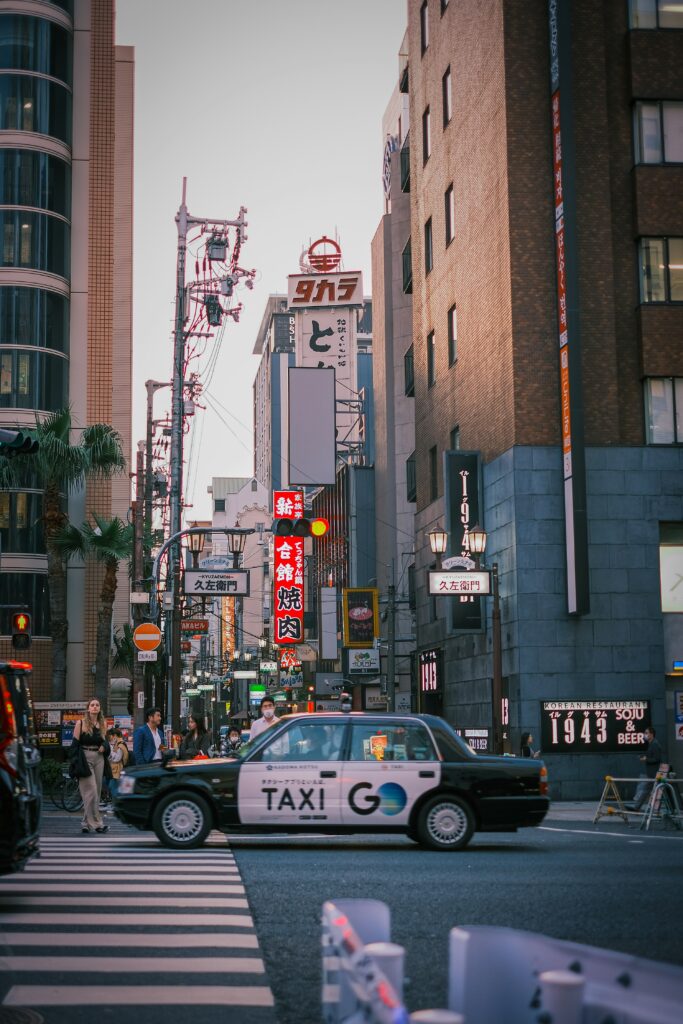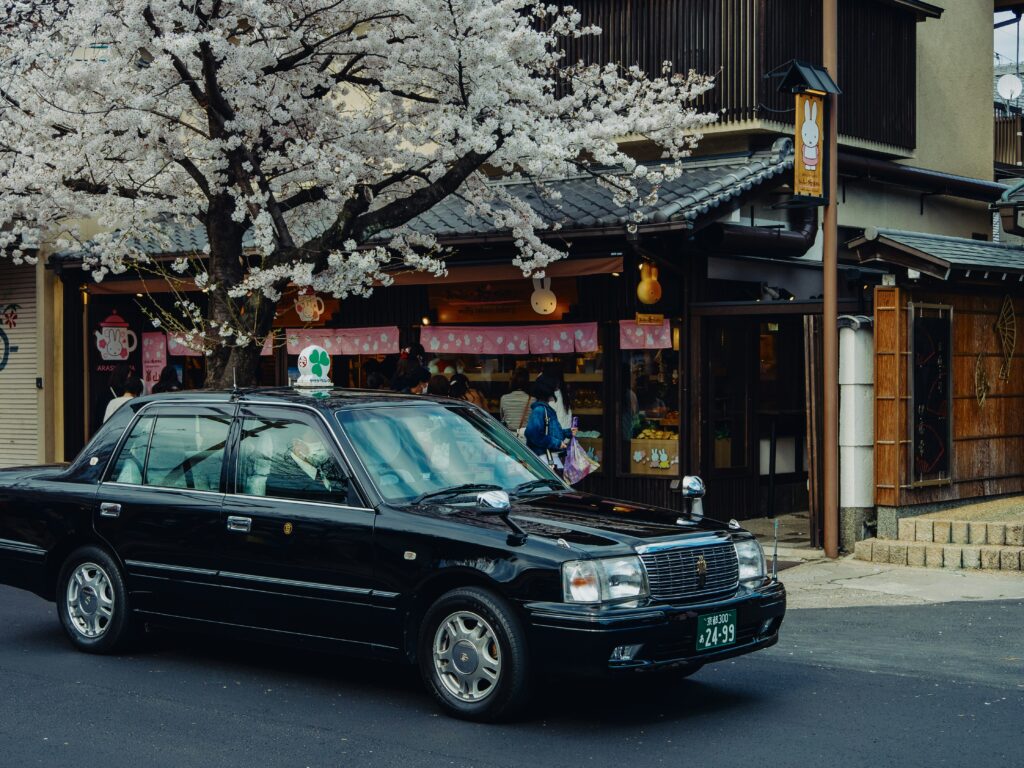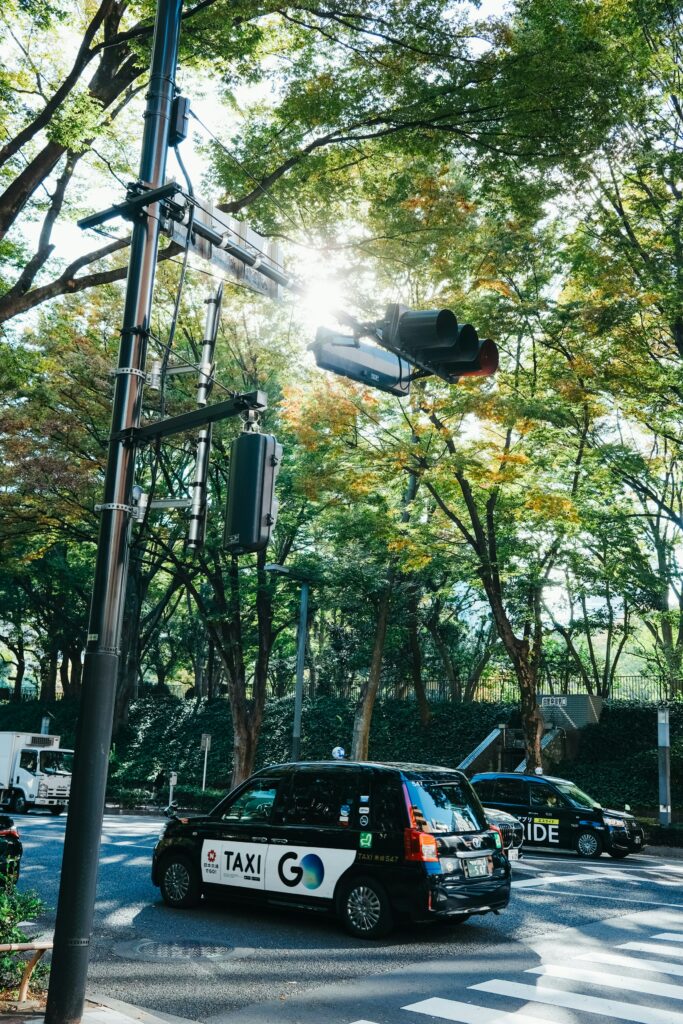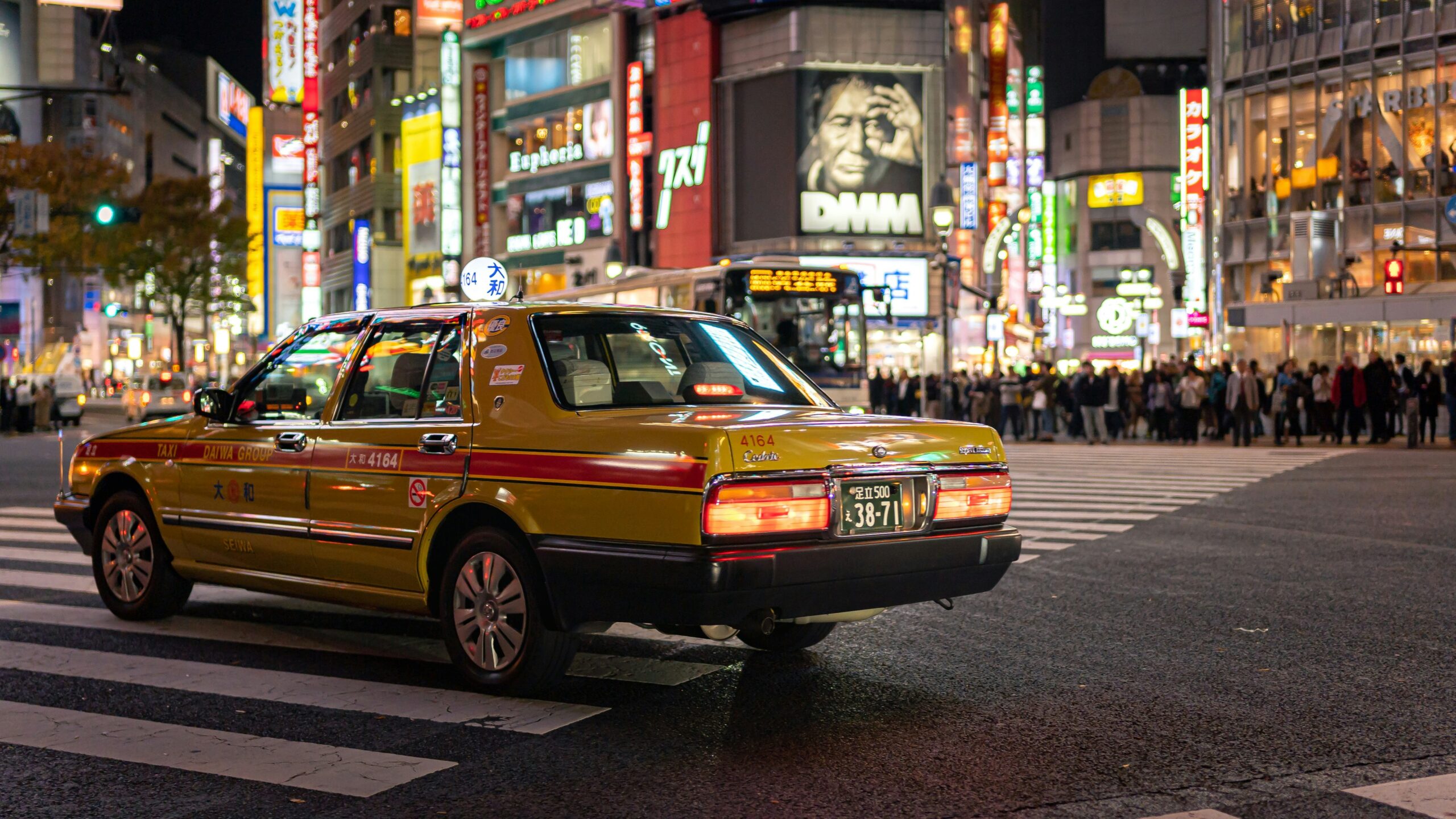Taxis are an incredibly convenient mode of transport in Japan. They’re especially useful when public transportation is scarce, during off-peak hours, or when you have a lot of luggage. Here’s how foreign visitors can comfortably use taxis in Japan.
How to Hail a Taxi in Japan
Getting a taxi in Japan is very straightforward.

- Hailing a street taxi: An empty taxi will display “空車” (kūsha – vacant) or “賃走” (chinso – in service) on its front windshield (in some regions, “空車” might be green). Just raise your hand to signal, and they’ll stop for you. At night, the roof light is usually illuminated.
- Using a taxi stand: Major train stations, hotels, and commercial facilities often have taxi stands. Line up and wait for your turn.
- Using ride-hailing apps: Apps like Uber and DiDi are also available. These are particularly useful if you’re not confident with Japanese or want to pinpoint your exact location. You can input your destination directly into the app, minimizing communication with the driver.
- Automatic doors: Most Japanese taxis have automatic rear doors. Don’t try to open or close them yourself.
Pros and Cons of Using Taxis

Pros
- Door-to-door service: Taxis take you directly to your destination, eliminating the need for transfers or the hassle of carrying heavy luggage.
- Time efficiency: They’re perfect for when public transport isn’t running or if you’re in a hurry.
- Private space: Enjoy your journey with companions without worrying about other passengers.
- Comfort: Vehicles are typically clean and comfortable, making even longer journeys less tiring.
- Shelter from bad weather: Taxis are especially welcome on rainy or snowy days.
Cons
- Higher cost: Taxis are more expensive than trains or buses. They can feel particularly pricey if you’re not traveling with multiple people.
- Traffic jams: Depending on the time and location, you might get caught in traffic, which can increase your travel time and fare.
- Language barrier: Some drivers may not speak English. It’s a good idea to prepare some simple Japanese phrases or a translation app.
- Late-night surcharge: A surcharge applies during late-night hours (generally 10:00 PM to 5:00 AM).
Effective Usage and Important Tips for Tourists

- Short distances or heavy luggage: Taxis are ideal for short trips from stations or hotels to tourist spots, or when you have bulky luggage.
- Late-night travel: They’re a lifesaver if you miss the last train or want to get back to your hotel after enjoying late-night sightseeing or dining.
- Group travel: If you’re traveling in a group, the per-person cost might be comparable to public transport.
- Giving directions:
- It’s smooth to have the exact address or name of your destination written down. If possible, show the location on a map app on your smartphone.
- Referring to landmarks (e.g., Tokyo Tower, Shibuya Scramble Crossing) can also work.
- Try saying, “〇〇 made onegai shimasu” (To 〇〇, please).
- Paying the fare:
- Many taxis accept credit cards and IC cards (like Suica or Pasmo), but it’s best to confirm before getting in or check the payment options displayed inside the car.
- Pay the amount shown on the meter when you get out. Tipping is not necessary.
- If you need a receipt:
- Ask for “Ryoshusho o onegai shimasu” (A receipt, please).
- Don’t forget your belongings: Always check for your belongings before exiting the taxi. If you happen to leave something behind, you’ll need to contact the taxi company. It’s helpful to note down the taxi company name or vehicle number if possible.

Japanese taxis are safe, reliable, and a great way to make your travels more comfortable. Use these tips to smartly utilize taxis and make the most of your stay in Japan!

